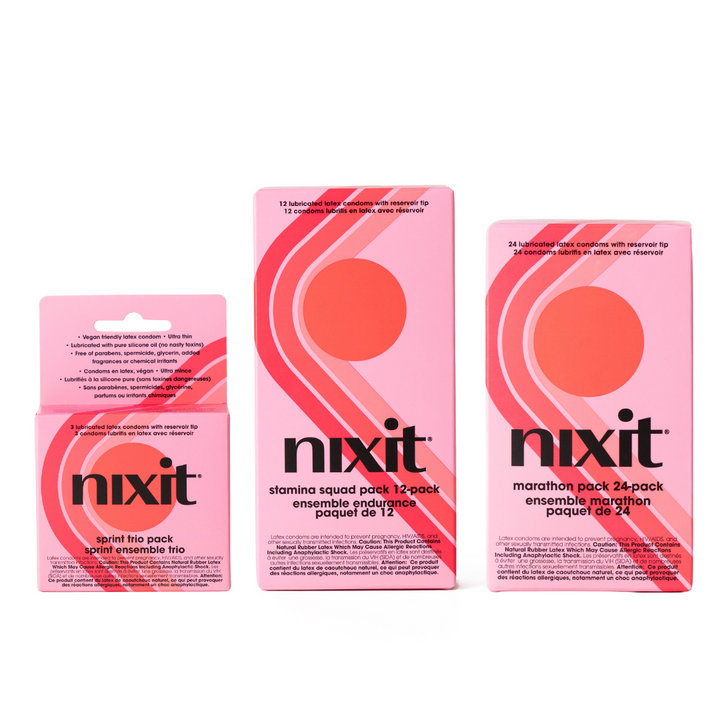Condoms are one of the safest and most widely used methods of protection during sex—but can they be to blame for urinary tract infections (UTIs)? While condoms play a crucial role in promoting sexual health, they can also bring about unexpected consequences for some. In this blog, we explore the nuanced relationship between condoms, vaginal health, and urinary tract infections, offering insight, prevention tips, and reassurance along the way.
Table of Contents
- What You Should Know About UTIs and How They Develop
- The Role of Condom Materials, Additives, and Lubricants
- How Condoms Can Influence Vaginal and Urinary Health
- Simple Strategies to Prevent Discomfort and UTIs When Using Condoms
- Empowering Yourself with the Right Information and Tools
- Other Frequently Asked Questions
What You Should Know About UTIs and How They Develop
Urinary tract infections (UTIs) are caused when bacteria—most commonly Escherichia coli (E. coli)—enter the urethra and multiply in the urinary tract. These infections are especially common in people assigned female at birth due to anatomical factors like a shorter urethra, which makes it easier for bacteria to reach the bladder.
While most UTIs are limited to the bladder and urethra, untreated infections can spread to the kidneys, becoming more serious. Common symptoms include:
A burning sensation when urinating
Frequent urge to urinate, often with little output
Cloudy or strong-smelling urine
Pelvic or lower abdominal pain
Sexual activity is a well-known contributor to UTIs. And while condoms can protect against many infections, they’re not entirely off the hook. For a deeper dive on what causes a UTI, check out our detailed blog.
The Role of Condom Materials, Additives, and Lubricants
Understanding what condoms are made of—and what’s on them—can help explain their potential role in triggering UTIs or vaginal discomfort.
Materials That May Cause Sensitivities
Most condoms are made of:
Latex – effective and widely used, but problematic for those with latex allergies
Polyurethane – a non-latex alternative that’s thinner and less allergenic
Polyisoprene – latex-free, soft, and stretchy, ideal for sensitive users
People with latex sensitivities may experience irritation, redness, or swelling—factors that can compromise the skin’s protective barrier and increase the risk of bacterial infection.
It’s important to note that latex allergies affect a small portion of the general population. Estimates vary, but studies suggest less than 1% to approximately 4.3% worldwide.
Lubricants and Additives
Many individuals who experience discomfort from condom use may assume they have a latex allergy, but the actual cause is often different. These reactions can mimic those of a latex allergy, leading to confusion. Condoms are often pre-lubricated, and this can be a hidden culprit in irritation:
Spermicides like nonoxynol-9 can irritate the vaginal lining and disrupt the microbiome, or cause allergic reactions
Flavored or scented condoms may contain artificial additives that disturb the pH balance
Fragrance-free, pH-balanced lubes are typically safer for vaginal and urinary health. If you’ve experienced discomfort after using certain lubricants, it may not be the act of lubrication itself, but what's in the formula. Opting for a water-based lubricant without common irritants can be a gentler option for everyday use.
How Condoms Can Influence Vaginal and Urinary Health
While condoms themselves don’t directly cause UTIs, certain factors associated with their use can increase your susceptibility.
Friction and Microabrasions
Friction during sex—especially when there’s not enough lubrication—can lead to microtears in the vaginal or urethral lining. These tiny abrasions make it easier for bacteria to enter the urinary tract. Using condoms with added lubricant or applying extra water-based lubricant can significantly reduce this risk.
Allergic Reactions and Sensitivities
Allergic reactions to latex or additives can cause inflammation, itching, or swelling. This irritation may disturb the natural balance of vaginal flora, leading to increased vulnerability to infections.
If you notice recurring irritation after using condoms, consider switching to latex-free varieties like polyurethane or polyisoprene—both are gentle alternatives available in today’s market, including Condoms designed with body-safe ingredients.
While latex is often blamed for irritation during condom use, the cause is frequently other ingredients like lubricants, fragrances, or preservatives added during manufacturing. Using condoms made without these additives can help reduce sensitivity and discomfort.
Vaginal pH Disruption
Vaginal health relies on a delicate pH balance, typically between 3.8 and 4.5. Many condom lubricants and additives fall outside this range, potentially disrupting your natural microbiome. Once disturbed, the environment can become more welcoming to unwanted bacteria—including those that cause UTIs.
Simple Strategies to Prevent Discomfort and UTIs When Using Condoms
Protecting your health doesn’t mean you have to compromise comfort. Here are expert-backed practices to help you stay safe and UTI-free:
Use pH-balanced, fragrance-free lubricants to maintain vaginal harmony
Opt for non-spermicidal condoms to avoid irritation
Choose the right size condom to avoid tightness and friction
Stay hydrated to encourage regular urination and flush out bacteria
Always urinate after sex to reduce the chances of bacteria entering the urethra
Clean the genital area before and after intimacy with mild, unscented soap
These simple habits can go a long way in safeguarding your urinary health and ensuring condoms remain your ally, not your enemy.
Empowering Yourself with the Right Information and Tools
Every body is different—and so is every experience with condom use. What works seamlessly for one person may cause discomfort for another. Understanding your body’s signals and being proactive about your choices can make a major difference in your sexual wellness.
If condoms leave you feeling irritated or lead to frequent UTIs, consider:
Trying non-latex condoms to rule out allergy or sensitivity
Testing different lubricants to find one that suits your vaginal environment
Exploring other contraceptive options with a healthcare provider
What matters most is finding what feels right for your body—without compromising your safety or pleasure.
Condoms are here to protect you—not harm you. Making the right choice means understanding how different factors interact with your body. Whether it’s materials, lubricants, or usage habits, even small changes can have a big impact on your urinary and vaginal health. Stay informed, stay curious, and stay empowered.
Other Frequently Asked Questions
Can non-latex condoms still cause UTIs?
Yes, but they’re generally less likely to cause irritation, especially for those with latex allergies. Choosing high-quality, pH-balanced products helps minimize risk.
Should I avoid condoms altogether if I get frequent UTIs?
Not necessarily. Focus on identifying the specific trigger—such as a spermicide or incompatible lubricant—and explore alternatives first.
Is urinating after sex really that important?
Absolutely. It helps flush bacteria from the urethra and is a well-established preventative measure against post-coital UTIs.
Are flavored or scented condoms riskier for vaginal health?
They can be. Additives in these condoms may disrupt your natural flora or pH. They’re often best reserved for external or oral use.
Can I treat UTIs with home remedies?
Mild UTIs may clear with increased hydration and supplements, but persistent or severe symptoms require medical attention.
nixit condoms

$23.00
nixit condoms are made from natural rubber latex and designed for those seeking vegan condoms that don’t compromise on safety or sensation. These ultra-thin condoms offer a barely-there feel with the strength you can trust. Free from harmful chemicals, gluten-free,… read more
This content is for informational purposes only and is not intended to diagnose, treat, cure, or prevent any disease. Self-treatment is not recommended for life-threatening conditions that require medical treatment under a doctor's care. For many of the conditions discussed, treatment with prescription or over the counter medication is also available. Consult your doctor, practitioner, and/or pharmacist for any health problem and before using any supplements or before making any changes in prescribed medications.





